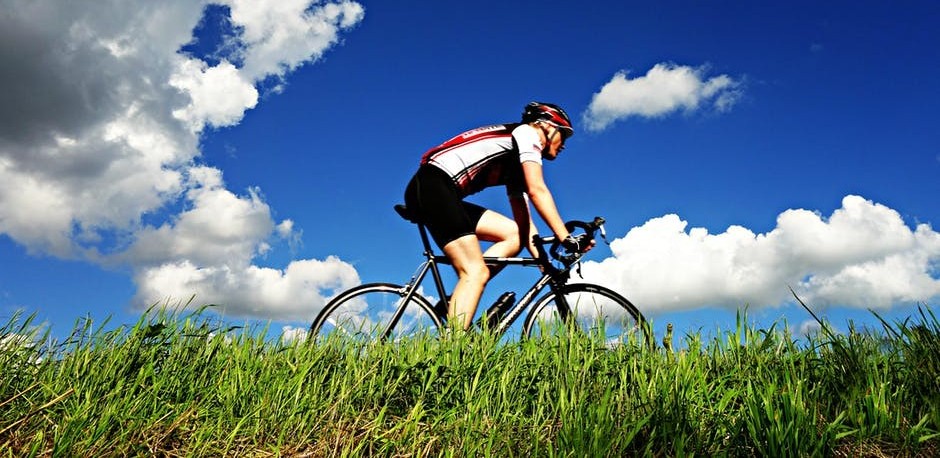
What is or are the secrets to cycling uphill?
Here are some cycling uphill tips you can hopefully use to improve your cycling, especially at race time or on prolonged climbs.
These cycling uphill tips do not involve hard interval training methods, hill repeats, or any other secret training methods.
In fact, it is so much simpler and nothing at all needs to change from within your normal training.
Cycling Uphill Tips
If you ask a group of professional cyclists what the most important part of their race preparation is, they all answer the same thing – body weight. Believe it or not, body weight can either be a performance booster or an inhibitor.
So these cycling uphill tips are actually going to turn into one main tip, and that is to be as light as you possibly can.
You are no doubt aware of the effects of gravity and the need to become an efficient and better climber. Getting better at cycling uphill requires improvements in both strength-to-weight ratio and your technical skill.
Think about this. If you are standing at the starting line of a race, you tend to compare yourself to your competitors. You may look more powerful than the person next to you, but if they have a svelte shape, it means they normally kill you on the hills. This should be enough motivation to make some lifestyle changes and lose a few kilograms.
Nothing drives the power-to-weight message home better than a sturdy climb. You will find most of the cyclists that do well on uphill climbs are the small thin ones. A heavier cyclist is going to use more power to move a heavier body and thus burn out a lot faster than a lighter cyclist.
Power and weight are easily measured in cycling, which means the sport lends itself to better analysis.
A power output of 250 watts, for a rider in good condition, is a sub-threshold pace they could sustain for a couple of hours. At 313 watts, the extra weight on the heavier rider means he’s over the threshold – and burning matches.
When the light rider decides it’s time to attack the 6% hill and accelerates to 22.5km/h, producing 330 watts of power. He’s now over the threshold, though not so deep that he’ll be blown out the back within a couple of minutes. But what about the heavier riders?
At 370 watts, the 85kg rider is digging really deep. If the hill doesn’t crest within a few minutes, he’ll be out of steam. At 410 watts the situation is more critical, with under two minutes’ capacity before the heavier rider fades out. And 6% isn’t even a steep hill. As you can see, those power-demand variances become greater as the steepness increases.
So as you can see, the key performance factor for cycling and hill climbing is threshold power to weight. Heavier riders are going to struggle a lot more on the hills.
So it’s all about controlling your weight, eating clean and shifting the extra fat to improve your performance.
A great way to go about seeing how you can cut down is by using a phone or app to record every everything that goes into your mouth. You will probably be surprised at just how much you take in without realizing.
Simply eating clean will shift the fat and improve your performance.
Some Additional Cycling Uphill Tips To Try
If you are not lucky enough to be very light, here are some additional cycling uphill tips:
- As you approach the hill, shift into a lower gear and maintain your RPM’s.
- Try to hold onto your current speed as you mount the hill.
- Keep your heart rate as low as possible by a gradual increase in effort level.
- Try to stay seated in your saddle.
- Fight the tendency to keep shifting gears as the climb steepens. This will reduce your speed to a crawl and put you behind your competitors.
- Keep your heart rate in check and try not to let it rise too much.
- The lactic acid will build up in your legs, and as this happens try sliding back in the saddle to change the firing order of the muscles. This will make you use more force from your glutes and quads.
- Try point your toes to bring your lower leg muscles into the game.
- Strive for a flat back with bent elbows, which lowers your center of gravity. By pulling from the contracted, supporting muscles of the core we can delay the accumulation of lactic acid in the primary muscles.
- Pay attention to your breathing – deep and even.
- Only leave the saddle as a last resort as this will make you more tired in the end.
And last but not least in these additional cycling uphill tips, keep your focus in the right places. Please feel free to add any comments you may think of to help cyclists to conquer those hills.

I am a beginner in cycling and this tips are very helpful. Great blog, nice post.
Glad to be of aid and thanks for stopping by.